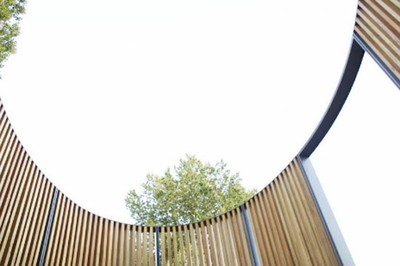 One thing regional leaders can do if they want to support long-term sustainability, along with investing in creating green jobs, is buying art. And I mean lots of art, really big art. Just how big are the art projects I am thinking about? Big enough to cover the Columbia River!
One thing regional leaders can do if they want to support long-term sustainability, along with investing in creating green jobs, is buying art. And I mean lots of art, really big art. Just how big are the art projects I am thinking about? Big enough to cover the Columbia River!
And this isn’t about wrapping the river in pink satin, either. I’m talking about the Confluence Project, an ongoing project on the Columbia River designed to “encourage action to create a future that preserves and protects the area’s natural and cultural resources.”
If you’re not one to believe art can make a difference, this project will make you think again.



At seven points along the Columbia River world renown artist Maya Lin (best known for designing the Viet Nam Veterans Memorial in Washington DC) has created interactive installations to call attention to how the river has changed since the time when Lewis and Clark first walked on is banks. All of them are an easy weekend visit for millions of Northwesterners.
The goal of the project is to draw people back into the environment and make them care about what is happening to the river and the people who depend on it.
A good example is the Bird Blind, one of the first installations that Lin completed at the mouth of the Sandy River. The Bird Blind started out as a small nature walk but has generated lots of interest in the preservation of the area’s natural beauty. A recent story in the Oregonian highlighted how various outdoor, recreational, and environmental groups with divergent interests rallied around the project:
There, they have come together, overcoming individual suspicions that the art project would be a roadblock to continued use of the site. They got assurances their favored plot of land wouldn’t be taken away, and gave something back: working together as volunteers to pick up trash, plan trails, clear brush and even mow the grass. And they help the Forest Service, the Oregon Department of Transportation and other agencies plan the area’s future uses.
So along with highlighting the various species that were prevalent at the time of Lewis and Clark’s arrival at the site, the project has motivated real and significant action to preserve the health of the river.
What makes the Confluence Project work is that it brings people into the environment in real time and on a real scale. Reading about the history of the Columbia River and its species is one thing, but actually engaging the problem up close is a different matter. The Bird Blind is a step above a walk in the woods, combining lots of data and facts together with a physical experience. It’s kind of like stepping into a life size graph or a chart illustrating human effects on the natural environment.
Artists Mary Miss and Marda Kirn write about how large scale projects like the Confluence Project can go a long way toward real policy change.
In City as Living Laboratory, their collection of large scale art projects in cities from Boulder to New Dehli, Miss and Kirn highlight projects that have drawn enough attention to water, waste, and habitat to make a real difference. Although these projects might seem, literally, beside the point, it’s their proximity and accessibility to a wide audience that makes them worth the investment.
The Confluence Project is ongoing and will be completed in 2012. You can visit the sites and track their progress at the project’s interactive website called the Journey Book.







